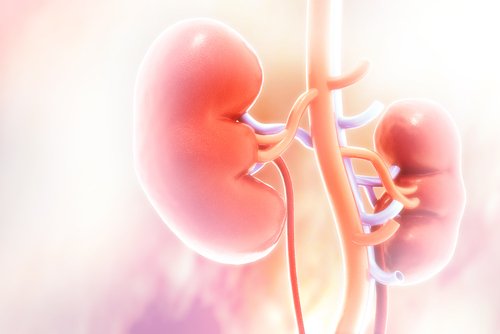Urinary G3BP Protein Levels Could Be Biomarker for Lupus Nephritis Activity, Study Finds
Written by |

The levels of galectin-3 binding protein (G3BP) in urine could be used as a biomarker of renal disease activity for systemic lupus erythematosus (SLE) patients with lupus nephritis, according to a study.
The study, “Urinary Galectin-3 Binding Protein As a Novel Biomarker of Renal Disease Activity in Lupus Nephritis,” was recently presented at the 2018 American College of Rheumatology/Association for Rheumatology Health Professionals Annual Meeting in Chicago.
Lupus nephritis, a type of kidney inflammation, is one of the most frequent and severe manifestations of SLE and may cause kidney failure.
Previous research showed that plasma levels of G3BP, which promotes cell-to-cell adhesion and triggers pro-inflammatory responses, are elevated in patients with SLE and are associated with high disease activity.
A team from Shanghai Jiaotong University School of Medicine, in China, and the EMD Serono Research and Development Institute assessed the levels of urinary G3BP in lupus nephritis patients and explored their association with renal disease activity, measured by rSLEDAI scores, which consists of the four kidney-related parameters in the SLE disease activity index (SLEDAI).
They included 44 patients with biopsy-proven active lupus nephritis, 27 with active SLE without lupus nephritis, and 24 with inactive SLE. A total of 28 age-matched healthy controls were also recruited.
Results showed that urinary G3BP levels were significantly higher in active lupus nephritis patients (27.65 ug per mg of creatinine, an indicator of kidney function) than in those with active non-nephritis SLE (6.35), inactive SLE (7.62), and healthy controls (1.89).
Data also showed that urinary G3BP outperformed conventional markers — such as complement proteins C3 and C4, and antibodies targeting double-stranded DNA (dsDNA) — in distinguishing SLE patients with active lupus nephritis from those with active non-nephritis.
Researchers found that the higher the levels of urinary G3BP, the lower the levels of hemoglobin — the protein that carries oxygen in the blood. In contrast, higher urine G3BP levels were associated with higher 24-hour urine protein, anti-dsDNA antibodies, and anti-nucleosome antibodies, another biomarker of lupus. Additionally, renal disease activity correlated significantly with urinary G3BP levels.
An analysis of biopsy results demonstrated that urinary G3BP levels were significantly elevated in proliferative classes III and IV compared with membranous class V lupus nephritis (32.59 vs. 4.54). Importantly, urinary G3BP was associated with the pathological renal activity index, which suggests that measuring G3BP levels in urine helps monitor the progression of renal changes in lupus nephritis patients.
“Our data suggest urinary G3BP as a biomarker for renal pathologies in patients with LN [lupus nephritis],” the team wrote. However, they noted that the results should be confirmed in a larger group of patients “to further validate the utility of urinary G3BP as a biomarker.”
Of note, EMD Serono is known as Merck KgaA in the U.S. and Canada.




